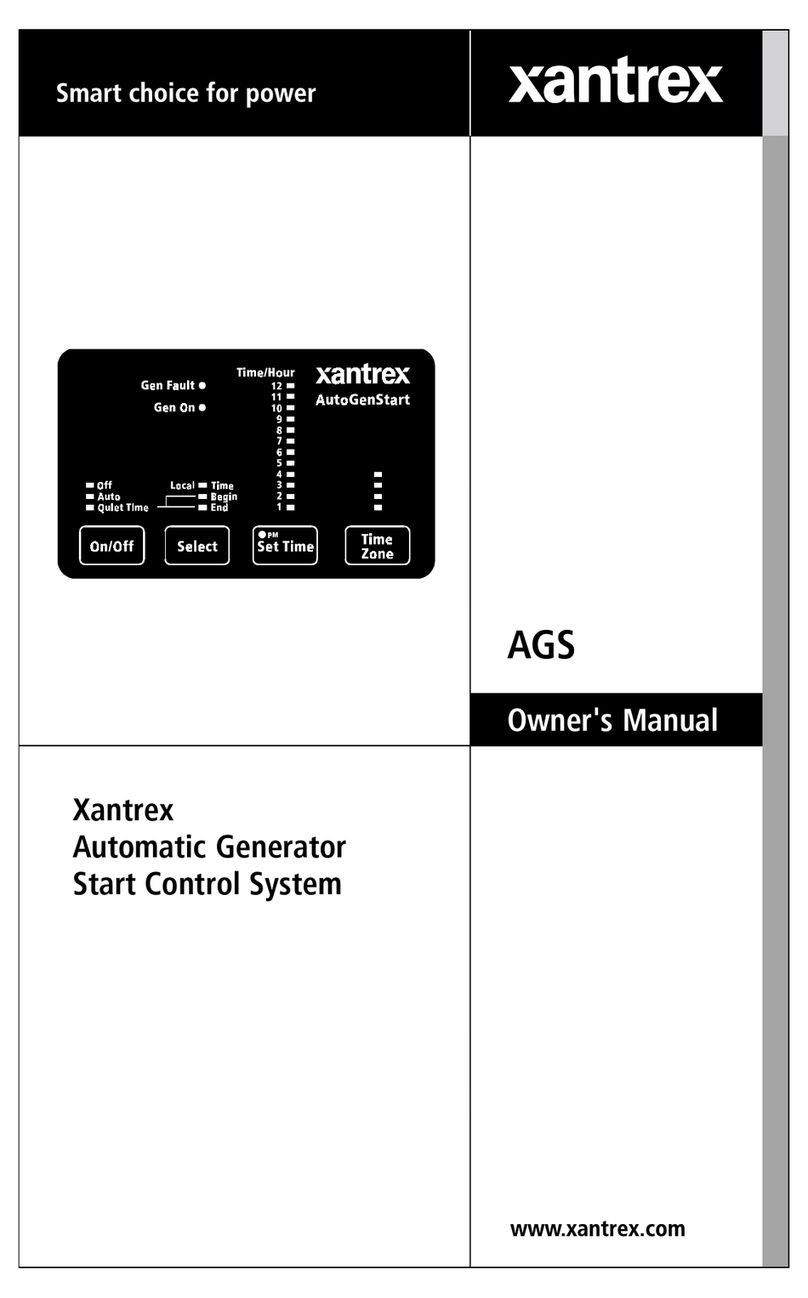
DANGER
HAZARD OF FIRE, ELECTRIC SHOCK, EXPLOSION, OR ARC FLASH
This Freedom e-GEN System End-of-Line Checklist is in addition to, and incorporates by reference, the relevant product manuals for each product in the power system. After reviewing this guide you must
read the relevant product manuals. Unless specified, information on safety, specifications, installation, and operation is as shown in the primary documentation received with the product. Ensure you are familiar
with that information before proceeding.
Failure to followthese instructions willresult in death orseriousinjury.
Important Safety Information
READ AND SAVE THESE INSTRUCTIONS
Electrical equipment shall be installed, operated, serviced, and maintained only by qualified personnel. Certain configuration tasks shall only be
performed by qualified personnel in consultation with your local utility and/or an authorized dealer. Servicing of batteries and the BMS shall only be
performed or supervised by qualified personnel with knowledge of lithium-ion batteries and their required precautions. Qualified personnel have training,
knowledge, and experience in:
• Installing electrical equipment
• Applying applicable installation codes
• Analyzing and reducing the hazards involved in performing electrical work
• Installing and configuring lithium-ion batteries
• Selecting and using Personal Protective Equipment (PPE)
No responsibility is assumed by Xantrex LLC for any consequences arising out of the use of this material.
DANGER
HAZARD OF FIRE, ELECTRIC SHOCK, EXPLOSION, OR ARC FLASH
• Apply appropriate personal protective equipment (PPE) and follow safe electrical work practices. See NFPA 70E or CSA Z462.
• Equipment must only be installed and serviced by qualified electrical personnel.
• Equipment may be energized from multiple sources. Never operate equipment energized with covers removed.
• In case of fire, use only a Class ABC type (dry chemical) fire extinguisher. Water can be a dangerous extinguishing medium for energized equipment
because of the risk of electrical shock.
• Always use a properly rated voltage sensing device to confirm all circuits are de-energized.
• Do not short-circuit the battery.
• Do not expose the battery to flames.
• Do not attempt to open or dismantle the lithium-ion battery. If the battery is damaged, do not touch the corrosive electrolyte or powder. In case battery
content comes in contact with skin or eyes, immediately flush the affected area with large amount of clean water and seek medical help.
• Upon disposal, do not crush, puncture, drop, disassemble, dispose of in fire, or similar actions.
Failure to follow these instructions will result in death or serious injury.
WARNING
HAZARD OF FIRE, ELECTRIC SHOCK, EXPLOSION, BURN, OR PERSONAL INJURY
• Always use the Xantrex Battery with the BMS. Never bypass the BMS. The BMS must always be connected to the lithium-ion battery and in the circuit
for proper operation and safety.
• Do not connect other battery types to the system DC load or the system DC bus.
• Do not expose any of the equipment to rain, snow, or liquids of any type. Products are designed for indoor use only.
• Do not operate the battery or other equipment with damaged or substandard wiring.
• Do not replace the battery fuses or any other fuses in the system by yourself.
• Do not obstruct the air ventilation openings on the system devices. Do not install or operate any of the system devices in compartment containing
flammable materials or in locations that require ignition-protected equipment.
• When the lithium-ion battery becomes damaged, it can release harmful gases. In such a case, ventilate the area whenever possible but evacuate the
vicinity immediately.
Failure to follow these instructions can result in death or serious injury.
CAUTION
RISK OF PERSONAL INJURY OR EQUIPMENT DAMAGE
• Use the right tools for the job. Use of improper tools may result in damage to equipment and personal injury.
• Do not lift heavy equipment by yourself. Use two or more people to lift and mount heavy equipment such as the inverter and battery. Use proper lifting
techniques during installation to prevent injury and equipment damage.
• Mount and fasten all devices securely according to their installation guides.
Failure to follow these instructions can result in personal injury and/or damage to equipment and may void the warranty.
Freedom e-GEN System End-of-Line Checklist 976-0361-01-01
Rev B






















